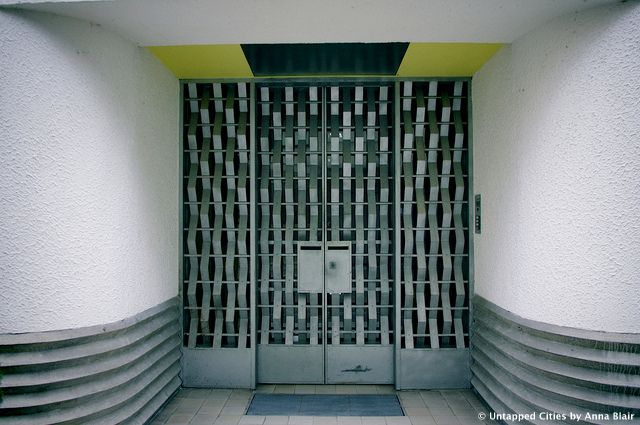Last-Minute NYC Holiday Gift Guide 🎁
We’ve created a holiday gift guide with presents for the intrepid New Yorker that should arrive just in time—

Robert Mallet Stevens was one of the great early 20th century architects, and yet some who walk past the street named after him to visit the Fondation Le Corbusier don’t know his name. This is a pity, as Mallet-Stevens is one of France’s best interwar architects, and the street bearing his name also contains five of his houses.

The reason for Mallet Stevens’ comparative neglect springs largely from his early death, in 1945, which prevented him from playing the same part in post-war architecture as others, such as Le Corbusier. Mallet Stevens asked that his archive be burnt when he died, subsequently making sustained study of his work more difficult.
Nonetheless, Mallet Stevens’ graceful buildings remain, though some have been altered. He’s best known for his large villas, one of which is now for sale an hour out of Paris; I’m hoping whoever buys it decides to open it to the public. While Mallet Stevens isn’t familiar to everyone, his reputation increased with the 2005 exhibition of his work at the Pompidou Centre and continues to grow.

In Paris, Rue Mallet Stevens is the best place to see the architect’s work. Some of the buildings have had unfortunate additions (such as extra storeys), but the group of five buildings gives a good sense of Mallet-Stevens’ style.
This style is similar to that of Le Corbusier, but also distinctly Mallet-Stevens’ own. His volumes are heavy but his lines are plain; he uses colour and decoration sparingly, but to good effect. His compositions are strong and singular and details are subtle -easily overlooked but, when examined, beautiful.

My favourite, and the most celebrated generally, is the home and studios of sculptors Joel and Jan Martel, recognisable as the artists’ names are still above the mailbox on one door. This detail is done beautifully; the typeface is clear, simple and modern, the same width as the mailbox itself, and the white background contrasts beautifully with the black door into which it is set.

The building has multiple entrances to meet its dual purpose, both home and workplace. Another door is set back from the facade, a porch made from the recess. The white and grey concrete gives a heavy impression, which is offset by the playful use of yellow just above the entrance.
While the street is narrow, Mallet-Stevens’ overall composition is best appreciated when standing back from the building. The way the different volumes are arranged and link together is complex, with rooms and, most noticeably, windows at different heights, with steps leading up to a small balcony. There is, at the centre, a round turret with decorative glasswork. Colour is used sparingly but to good effect across the building’s whole, appearing on the blinds of the windows, in the tower’s glasswork and elevated ceiling and, as mentioned, just above the recessed door.
Mallet Stevens created buildings that worked well for their residents, something that can be seen if you step inside the small gallery that operates on the ground level of this building. The large window that opens onto the street provides plenty of natural light, while an internal balcony and open staircase allow the central room to be double-height, sinking down into the ground.

Mallet Stevens’ other houses in the street are also worth looking at. The patterned glasswork on the central tower (which is, I believe, a staircase) and the use of yellow on the blinds is echoed on the next house along and the street generally has a lovely continuity which comes of having one architect work so particularly on a small area.
Those in search of more Mallet-Stevens will be interested in his fire station elsewhere in the 16th arrondissement, while those looking for more modernism in close proximity can continue along Rue du Docteur Blanche, past some exciting developments from the 1950s, to Le Corbusier’s Maisons La Roche and Jeanneret.
This post was originally published on the blog Flappers with Suitcases. Get in touch with the author @annakblair.
Subscribe to our newsletter